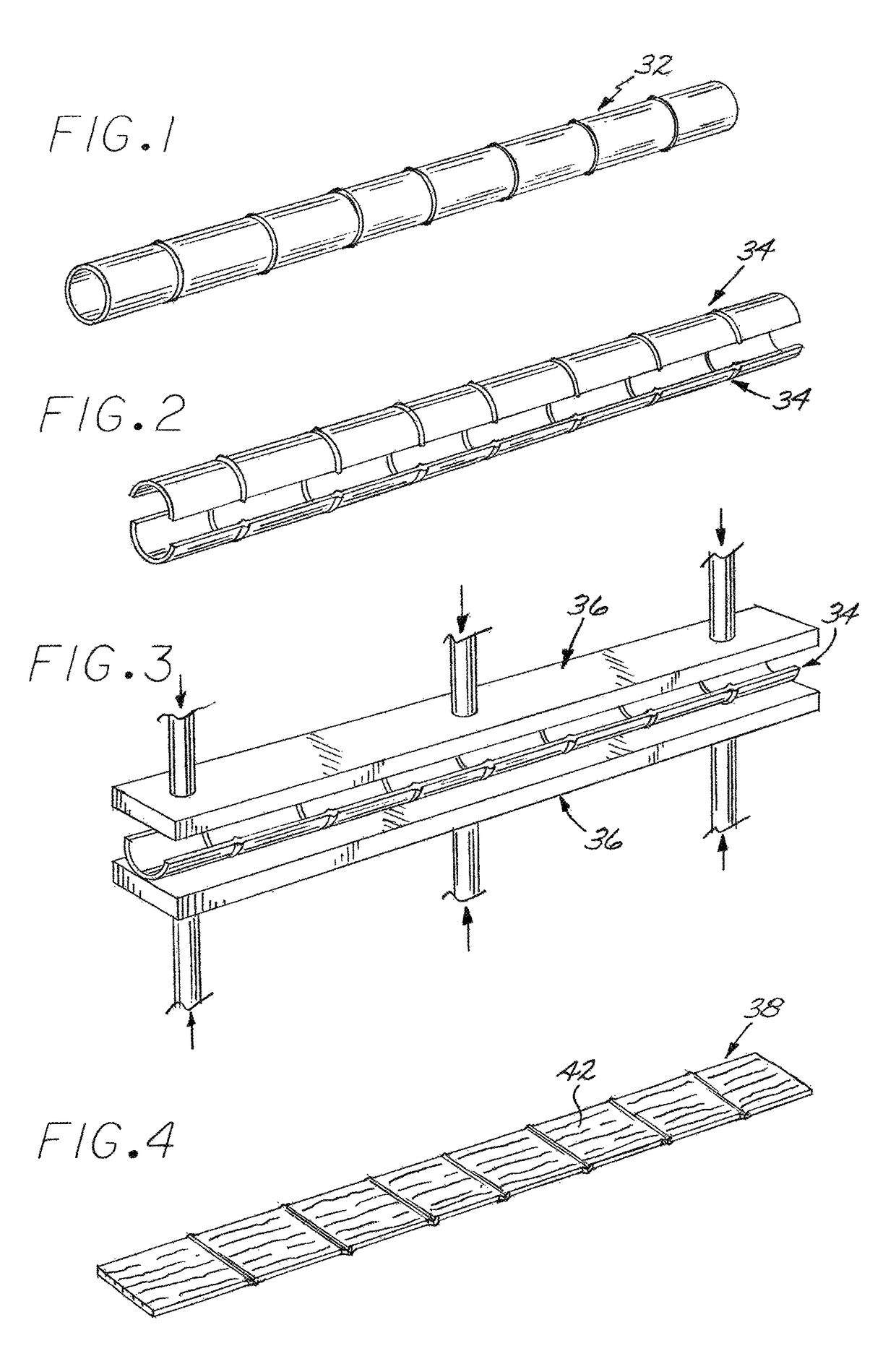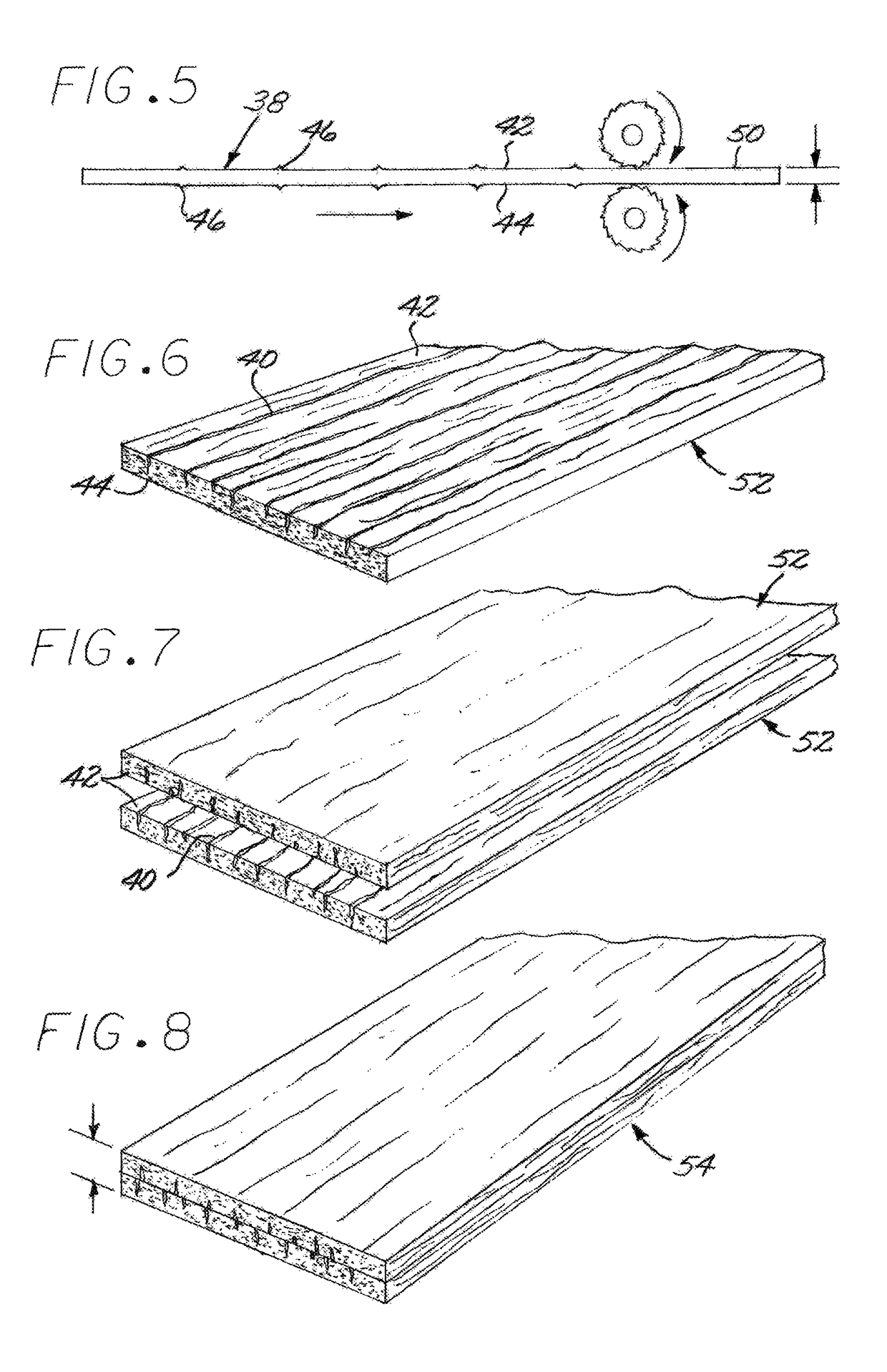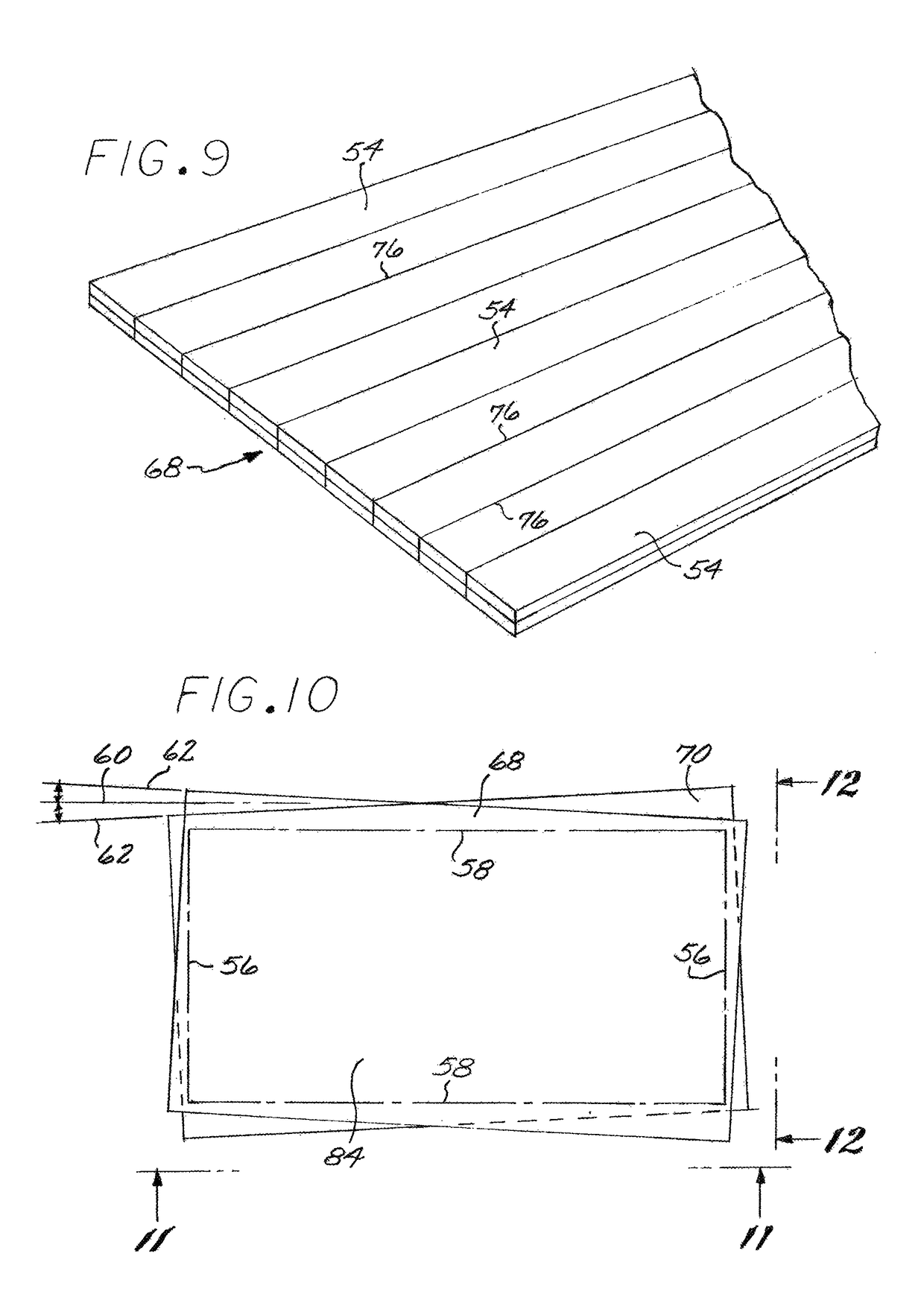Bamboo laminated construction panel and method of manufacture
a construction panel and bamboo technology, applied in the field of construction materials, can solve the problems of limited direct replacement use of bamboo cane, high demand for wood, and high demand for bamboo, and achieve the effects of reducing waste, ensuring continuity of material, and minimizing was
- Summary
- Abstract
- Description
- Claims
- Application Information
AI Technical Summary
Benefits of technology
Problems solved by technology
Method used
Image
Examples
Embodiment Construction
[0034]Although particular embodiments of the invention have been described in detail for purposes of illustration, various modifications may be made without departing from the spirit and scope of the invention. As used herein, the term “wood” refers to tree based material as distinguished from bamboo, which is grass based. Where examples are presented to illustrate aspects of the invention, these should not be taken as limiting the invention in any respect.
[0035]Now referring in greater detail to the various figures of the drawings wherein like reference characters refer to like parts, there is shown in FIG. 15, is a first embodiment of the present invention, a bamboo laminate panel, shown at 30, suitable for use as dimensional construction panel having structural characteristics and specifications meeting or exceeding wood based products of similar dimensions. The bamboo laminated panel comprises layers of pressed continuous bamboo culm halves and outer wood veneer layers laminated...
PUM
| Property | Measurement | Unit |
|---|---|---|
| angle | aaaaa | aaaaa |
| lengths | aaaaa | aaaaa |
| widths | aaaaa | aaaaa |
Abstract
Description
Claims
Application Information
 Login to View More
Login to View More - R&D
- Intellectual Property
- Life Sciences
- Materials
- Tech Scout
- Unparalleled Data Quality
- Higher Quality Content
- 60% Fewer Hallucinations
Browse by: Latest US Patents, China's latest patents, Technical Efficacy Thesaurus, Application Domain, Technology Topic, Popular Technical Reports.
© 2025 PatSnap. All rights reserved.Legal|Privacy policy|Modern Slavery Act Transparency Statement|Sitemap|About US| Contact US: help@patsnap.com



